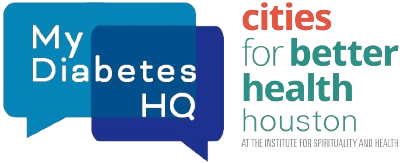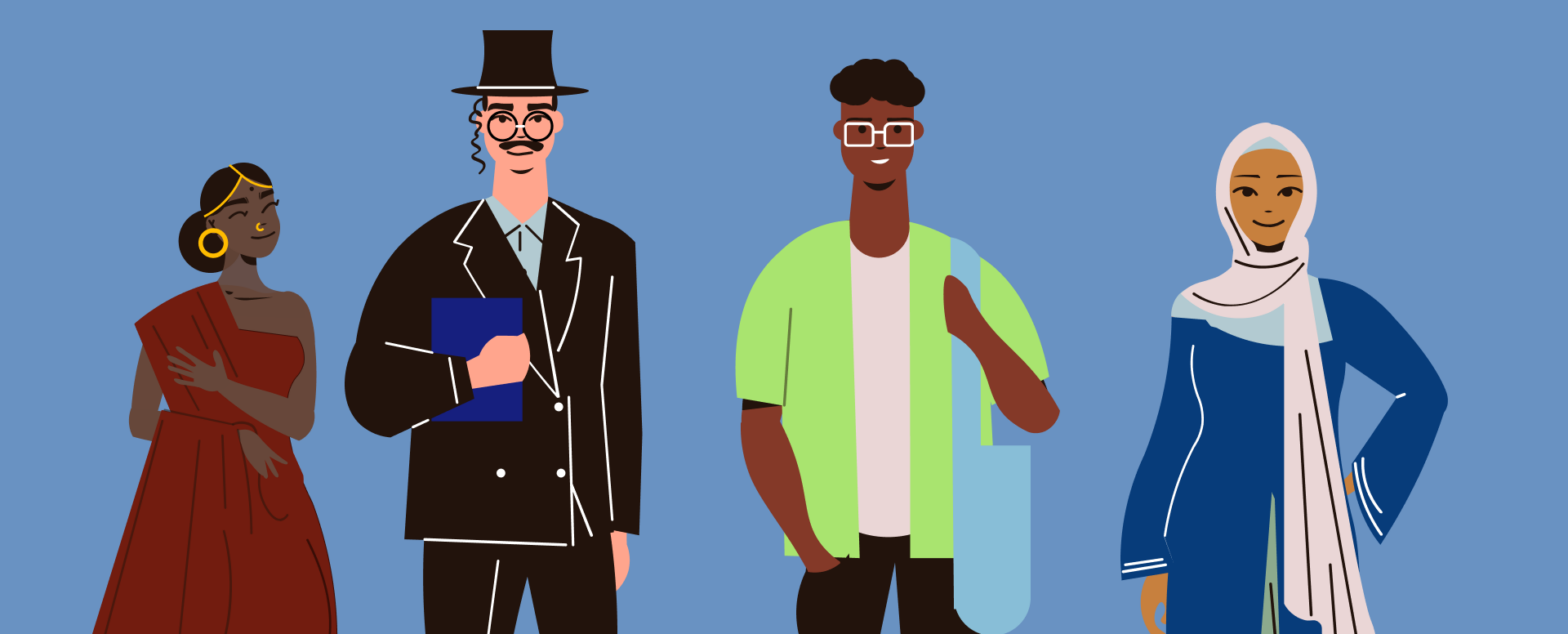Imagine the hum of a classic engine restored to its original glory—a triumph of precision and passion. Now, embed that sense of achievement within the public health sphere, where victory translates into a life potentially saved:
This is our challenge with diabetes in Black and Brown communities. It is an epidemic that is disproportionately affecting these populations.
On the road to wellness, the statistics act as mile markers. As of the latest health surveys, Black and Brown communities experience higher rates of diabetes, signaling the urgency for targeted health interventions and culturally informed care.
Disproportionate Impact on Black & Brown Populations
The stark disparities in diabetes prevalence are alarming markers of systemic inequality. Black and Brown individuals face significantly higher diabetes rates, echoing a broader narrative of health inequity.
In addressing this alarming diabetes statistics, it’s imperative to consider factors such as accessibility to quality healthcare, prevalence of high-risk factors, and socioeconomic barriers. Recognizing these determinants paves the way for meaningful action against diabetes in Black and Brown communities.
The fight against this disparity is not just a matter of public health—it’s a call for justice. Our collective action can form the cornerstone of transformative health equity.
Statistics Highlighting Racial Disparities
The numbers are stark, almost imploring us to look closer: Black Americans are 1.7 times more likely than white adults to develop diabetes, a clarion call for change.
Biases in healthcare, systemic obstacles, and socioeconomic conditions form a trifecta of adversity, disproportionately affecting communities of color. This picture is more than alarming, it’s a prompt to rectify injustice.
While the data is disheartening, it also shows promise—it beckons action. Studies illustrate that targeted interventions can stem the tide of diabetes within Black and Brown populations. Let’s commit to combat this inequity with education, empathy, and unwavering support for diabetes care.
Socioeconomic Factors at Play
Disparities in health transcend biological differences, rooted deeply in socioeconomic factors that are often overlooked.
- Income Levels: Financial constraints limit access to healthy food options and health care services.
- Educational Opportunities: A dearth of education translates to a gap in health literacy, stymying informed health choices.
- Employment Conditions: Jobs without flexibility or health benefits can hinder regular medical check-ups and proper chronic disease management.
- Neighborhood Environment: Residing in places with poor walkability and scant nutritional resources contributes to sedentary lifestyles and unhealthy diets.
- Healthcare Accessibility: Systemic barriers prevent adequate healthcare services, including diabetes screening and treatment.
- Cultural Norms: Prevailing beliefs and traditions within communities can influence lifestyle choices that increase diabetes risk.These elements weave a complex tapestry of risk, heightened for Black and Brown communities.To unravel this tapestry requires a multifaceted approach; it’s not simply a health issue — it’s social, economic, and fundamentally equitable.
The Influence of Genetics and Biology
Certain genes increase the likelihood of developing type 2 diabetes, and when these are prevalent in Black and Brown populations, they create an inherent vulnerability. This genetic predisposition, couched in complex interactions between multiple genes and environmental factors, necessitates a nuanced understanding of risk within these communities.
It’s crucial to note, however, that genetics alone do not seal one’s fate. Lifestyle interventions can significantly mitigate this hereditary risk and open avenues for effective disease prevention and management in Black and Brown communities.
Tracing Ancestral Health Patterns
Ancient dietary practices held clues to sustenance but also introduced genetic predispositions. How does this heritage relate to today’s health crises?
In generations past, traditional diets rich in natural and whole foods provided the foundation for health resilient against many noncommunicable diseases. These eating habits were innately tailored to the needs of the people, forged by availability and necessity.
Yet, the transition from these ancestral diets to modern processed foods has been sharp and unforgiving. Akin to culture shock, our bodies’ metabolic systems are struggling to adapt to the high-sugar, high-fat diets that have become commonplace—we are ill-equipped for this dietary revolution.
Adversely, the very resilience once provided by traditional lifestyle practices has been eroded. This seismic shift from physically demanding daily routines to more sedentary lifestyles undermines our inherited strengths, further predisposing us to diabetes.
Unraveling these threads of our past necessitates a return to the roots of our nutritional heritage. Only by reconciling ancestral wisdom with modern health can we forge a sustainable path forward, reversing these disturbing trends.
Prediabetes and Genetic Predispositions
While genetics loads the gun, lifestyle pulls the trigger, prediabetes standing ominously as the bullet within the chamber. Indeed, genetics offer clues but not destinies.
Our very DNA may carry markers signaling a higher prediabetes risk. Understanding these markers can guide prevention strategies.
In communities of color, certain genetic profiles are recurrently linked to an inclination for insulin resistance, the harbinger of type 2 diabetes. Yet, it is the interplay of genetics with lifestyle that lights the fuse.
Acknowledging this genetic underpinning is crucial, yet should not eclipse the profound impact of environmental factors. Lifestyle modifications, although challenging, can significantly offset genetic risks, emphasizing the power we hold in crafting our health destiny. Without action, predispositions become prophecies; with intervention, they need not dictate our wellbeing.
Lifestyle and Cultural Considerations
Traditional dishes, rich in history and flavor, often anchor communities’ diets, shaping meal patterns and preferences. These culinary legacies, while culturally invaluable, may inadvertently contain dietary pitfalls conducive to diabetes.
Compounded by socioeconomic factors, convenient access to processed foods often outpaces that to fresh, wholesome options, distorting diets. In low-access areas, known as food deserts, healthy food scarcity entrenches habits misaligned with diabetes prevention, reinforcing health disparities.
Promoting “food literacy” and “dietary empowerment” can bridge gaps, turning knowledge into power as the bedrock of transformative health practices.
Diet and Exercise Traditions
Diet and exercise traditions in black and brown communities are often deeply rooted in cultural history and practices.
- Soul food: A calorically dense cuisine that can exacerbate diabetes risk if consumed without moderation.
- Festive Feasting: Celebrations often revolve around copious amounts of food, challenging portion control and balanced eating.
- Manual Labor: Historic reliance on physical labor may undervalue structured exercise as a health practice.
- Communal Activities: Exercise is frequently a social and community-based activity, not solely a personal health routine.Embracing traditional foods while adapting recipes to be more healthful is vital in managing diabetes risk.Physical activity, integral to wellness, should be reframed as a proactive part of daily life rather than as a response to weight gain alone.
Access to Healthcare Resources
Inequities in healthcare access are starkly evident in black and brown communities.
- Proximity to Clinics: Urban deserts and rural areas often lack nearby healthcare facilities.
- Insurance Coverage: A higher uninsured rate impedes regular check-ups and diabetes management.
- Transportation Issues: Without reliable transportation, clinic visits become a significant hurdle.
- Cost of Care: High expenses for treatment and medications can be prohibitive.
- Cultural Competency: Healthcare professionals and physicians may lack cultural understanding, impeding effective communication.
- Language Barriers: Non-English speakers face additional challenges in receiving quality care.
The lack of easy access to healthcare professionals hinders consistent diabetes monitoring and education.
To mitigate these disparities, initiatives must focus on expanding healthcare accessibility and culturally informed care.
Strategies for Change and Support
Community empowerment is crucial for mitigating diabetes in black and brown populations.
By fostering partnerships between healthcare systems and community organizations, we can create culturally tailored diabetes prevention programs, enhancing both outreach and engagement.
Activating policy advocacy for equitable healthcare can break down systemic barriers, ultimately bolstering long-term health outcomes.
Community-Based Health Initiatives through Cities Changing Diabetes Houston
Community involvement is pivotal in tackling diabetes in diverse populations.
In places where cultural ties influence lifestyle, local initiatives serve as cultural bridges to better health outcomes. Grassroots efforts have proven effective, offering more than just medical advice—they forge trust within communities.
Check out these local Houston-based programs: MyDiabetesHQ, Faith and Diabetes, Peer Support, and Bite of Hope.
Educational Programs and Outreach Efforts
Effective education is pivotal, transforming passive awareness into active prevention and management of diabetes.
Critical to reducing disparities, educational programs emerge as a cornerstone to empower African Americans and Hispanic communities; they demystify diabetes, break down barriers, and enlighten individuals on how to navigate their health journey. With cultural sensitivity at their core, these programs facilitate encounters that are respectful and relevant, bridging knowledge gaps and fostering self-efficacy, thereby altering the trajectory of countless lives.
Indeed, canvassing neighborhoods with tailored messages creates ripples of awareness. Champions of health, equipped with firsthand understanding of cultural nuances, dispense lifesaving information that resonates deeply, sparking behavioral shifts toward screening, nutrition, and physical activity that resonate with cultural identity.
Ultimately, outreach is not just about disseminating facts—it’s about weaving a narrative that underscores the power of prevention and management. By constructing webs of support that intertwine medical knowledge with cultural relevance, these programs undoubtedly lead to a reduction in diabetes rates. They embolden individuals to take ownership of their health, transforming passive knowledge into actionable wisdom that reverberates through communities, promising a brighter, healthier future.



